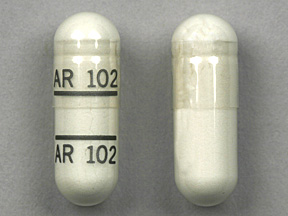Qualaquin Disease Interactions
There are 8 disease interactions with Qualaquin (quinine).
- QT prolongation
- G-6-PD deficiency
- Myasthenia gravis
- Ocular toxicity
- Thrombocytopenia
- Tinnitus
- Liver impairment
- Renal impairment
Antimalarial agents (applies to Qualaquin) QT prolongation
Major Potential Hazard, Moderate plausibility. Applicable conditions: Hypokalemia, Arrhythmias, Magnesium Imbalance
The use of certain antimalarial agents is contraindicated in patients with known prolongation of QT interval as these patients can develop fatal arrhythmias. These drugs should also be avoided in patients with clinical conditions known to prolong the QT interval, such as uncorrected hypokalemia or hypomagnesemia, bradycardia, and certain other cardiac conditions. Caution is advised in patients taking other medications that can prolong the QT interval.
Quinine (applies to Qualaquin) G-6-PD deficiency
Major Potential Hazard, High plausibility.
The use of quinine is contraindicated in patients with glucose-6-phosphate dehydrogenase (G-6-PD) deficiency. Red blood cells are more easily destroyed in patients with G-6-PD deficiency and may lead to hemolysis and anemia.
Quinine (applies to Qualaquin) myasthenia gravis
Major Potential Hazard, Moderate plausibility.
The use of quinine is contraindicated in patients with myasthenia gravis, as quinine has neuromuscular blocking activity, and may exacerbate muscle weakness.
Quinine (applies to Qualaquin) ocular toxicity
Major Potential Hazard, High plausibility. Applicable conditions: Visual Defect/Disturbance
The use of quinine is contraindicated in patients with optic neuritis, and cautious use, if at all, is advised for patients with retinopathy or other visual defects. Quinine may affect the retina and optic nerve, producing visual disturbances that include blurred vision with scotomata, photophobia, diplopia, constricted visual fields, night blindness, and abnormal color perception. Although ocular toxicity is usually reversible following drug withdrawal, retinopathy and optic atrophy can occur in severe cases. All patients should be advised to immediately discontinue the drug and contact a physician if visual disturbances occur or are exacerbated during quinine therapy.
Quinine (applies to Qualaquin) thrombocytopenia
Major Potential Hazard, Moderate plausibility.
Quinine is contraindicated in patients with thrombocytopenia. Quinine can produce an immune-mediated thrombocytopenia. Severe cases of thrombocytopenia that are fatal or life threatening have been reported. Chronic renal impairment associated with the development of TTP has also been reported. Thrombocytopenia usually resolves within a week upon discontinuation of quinine. If quinine is not stopped, patients can be at risk for fatal hemorrhage. Upon re- exposure to quinine from any source, a patient with quinine- dependent antibodies could develop thrombocytopenia that is more rapid in onset and more severe than the original episode.
Quinine (applies to Qualaquin) tinnitus
Major Potential Hazard, High plausibility.
The use of quinine is contraindicated in patients with tinnitus. Quinine has been associated with reversible and irreversible ototoxicity. Reversible hearing loss, tinnitus, and dizziness has been reported in 20% of patients receiving therapeutic doses of quinine. Cystic degeneration of stria vascularis, degeneration of the cochlear neurons, and loss of hair cells occur. Injury may be produced by spasm of cochlear blood vessels, resulting in anoxia and subsequent cellular damage.
Quinine (applies to Qualaquin) liver impairment
Moderate Potential Hazard, Moderate plausibility. Applicable conditions: Liver Disease
In patients with severe hepatic impairment (Child-Pugh C), quinine oral clearance is decreased, volume of distribution is increased, and half-life is prolonged, relative to subjects with normal liver function. Therefore, quinine is not indicated in patients with severe hepatic impairment and alternate therapy should be administered. Adjustment of the recommended dose is not required in mild (Child-Pugh A) or moderate (Child-Pugh B) hepatic impairment, but patients should be monitored closely for adverse effects of quinine.
Quinine (applies to Qualaquin) renal impairment
Moderate Potential Hazard, Moderate plausibility. Applicable conditions: Renal Dysfunction
Clearance of quinine is decreased in patients with severe chronic renal failure. The dosage and dosing frequency should be reduced. The effects of mild and moderate renal impairment on the safety and pharmacokinetics of quinine sulfate are not known. Monitoring is advised.
Switch to professional interaction data
Qualaquin drug interactions
There are 492 drug interactions with Qualaquin (quinine).
Qualaquin alcohol/food interactions
There is 1 alcohol/food interaction with Qualaquin (quinine).
More about Qualaquin (quinine)
- Qualaquin consumer information
- Check interactions
- Compare alternatives
- Reviews (4)
- Drug images
- Side effects
- Dosage information
- During pregnancy
- Drug class: antimalarial quinolines
- Breastfeeding
- En español
Related treatment guides
Drug Interaction Classification
| Highly clinically significant. Avoid combinations; the risk of the interaction outweighs the benefit. | |
| Moderately clinically significant. Usually avoid combinations; use it only under special circumstances. | |
| Minimally clinically significant. Minimize risk; assess risk and consider an alternative drug, take steps to circumvent the interaction risk and/or institute a monitoring plan. | |
| No interaction information available. |
See also:
Further information
Always consult your healthcare provider to ensure the information displayed on this page applies to your personal circumstances.


